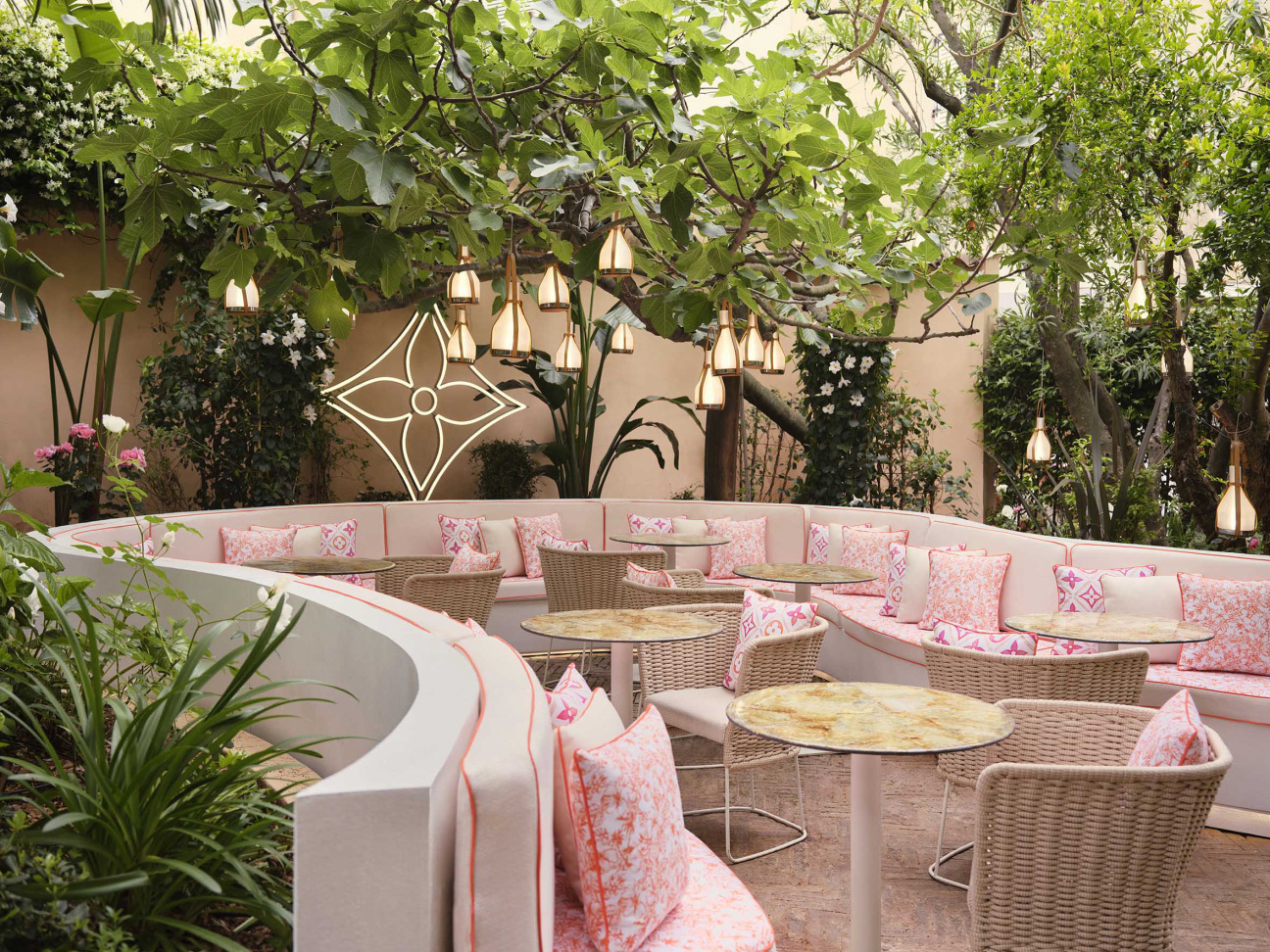
Louis Vuitton’s iconic monogram was first designed as a way to bridge one generation to the next.
In 1896, the founder’s son, Georges Vuitton, sketched the blooming floral motif and interlocking initials as an ode to his late father. The design has come to connect the far reaches of the house, splashed across clothing, accessories, and now, an inaugural tableware collection. Louis Vuitton is serving courses with its new suite of blooming porcelain, glasses, and carafes at the restaurants it runs around the globe.
To hear how the outposts are preparing for the summer dining season, CULTURED caught up with the chefs responsible for dining à la Louis Vuitton.
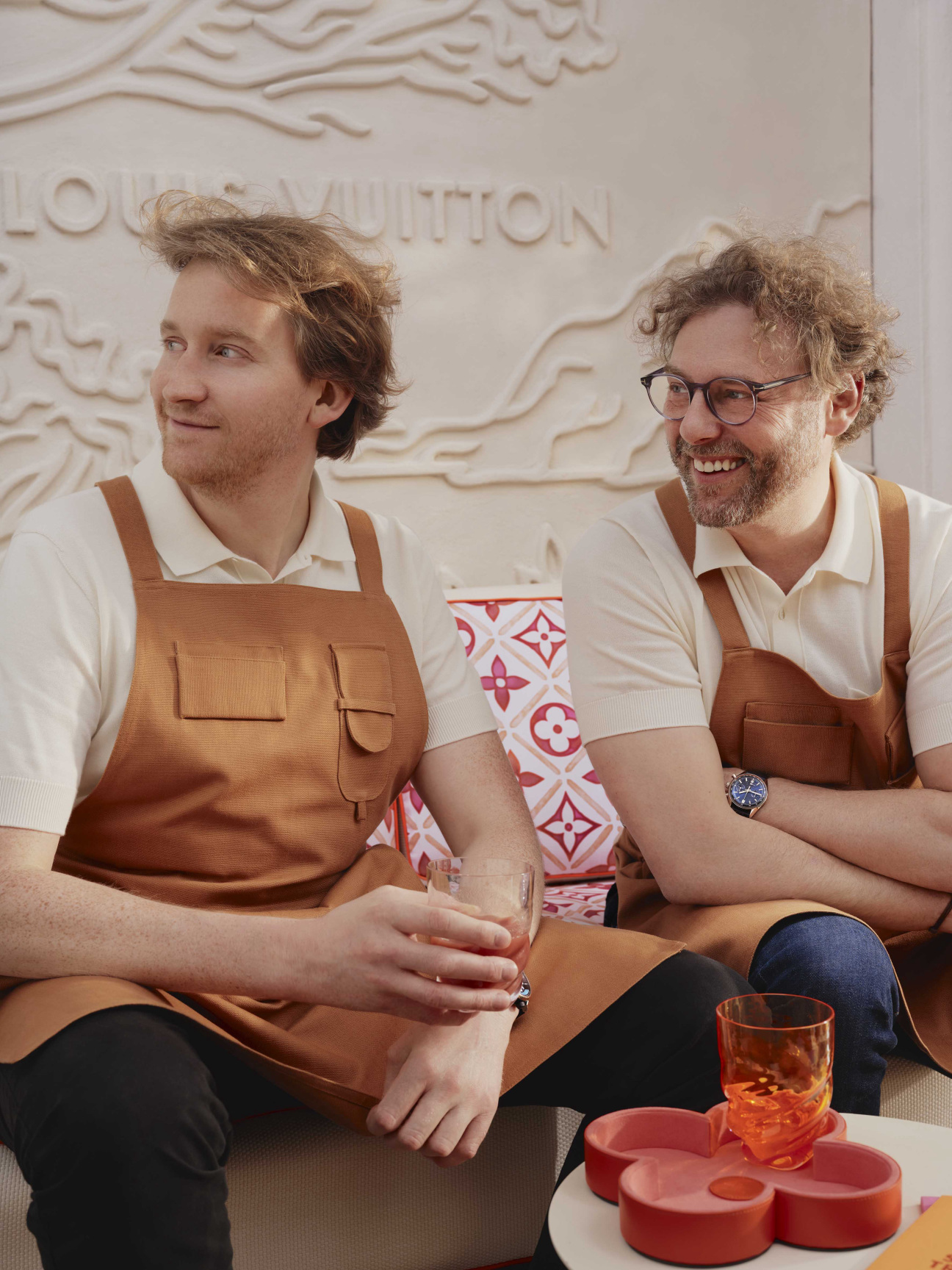
FROM SAINT-TROPEZ
Spending the summer working on the French Riviera amongst friends—can it even be called work? Louis Vuitton’s Saint-Tropez restaurant at White 1921 hotel is under the guidance of Michelin-starred chef Arnaud Donckele and pastry chef Maxime Frédéric. Together, the colleagues and close friends have transformed the coastal spot into a hub for fine Mediterranean dining.
What is an essential detail for a perfectly presented dish?
Maxime Frédéric: We are respecting Louis Vuitton’s history to the letter, without ever distorting it. For Louis Vuitton, a perfectly plated dish means that we are following the codes of maison. There are no faux pas; there are no needless frills either. It has to be delicious.
The spirit of the monogram shouldn’t minimize the dish; it is there to enhance the deliciousness, the “wow” effect, the emotion. An essential detail is the respect of these rules, this code, this manual know-how, and art of raw materials. At Louis Vuitton, this is what you see when you go to the workshops, when you go to Asnières. Our dishes share this same focus: raw materials that are carefully chosen with incredible people.
What are some of the iconic flavors and ingredients that make Saint-Tropez’s cuisine so unique?
Arnaud Donckele: Louis Vuitton in Saint-Tropez is close to the sun, so tomato is the perfect flavor with the human and plant warmth it exudes. There’s also all types of anise, fennel, thyme, and savory summer verbena.
What aspects of your city are reflected in your work?
Donckele: Saint-Tropez brings a touch of lightness, a slightly bohemian-chic style. Something quite carefree, bucolic, and poetic.
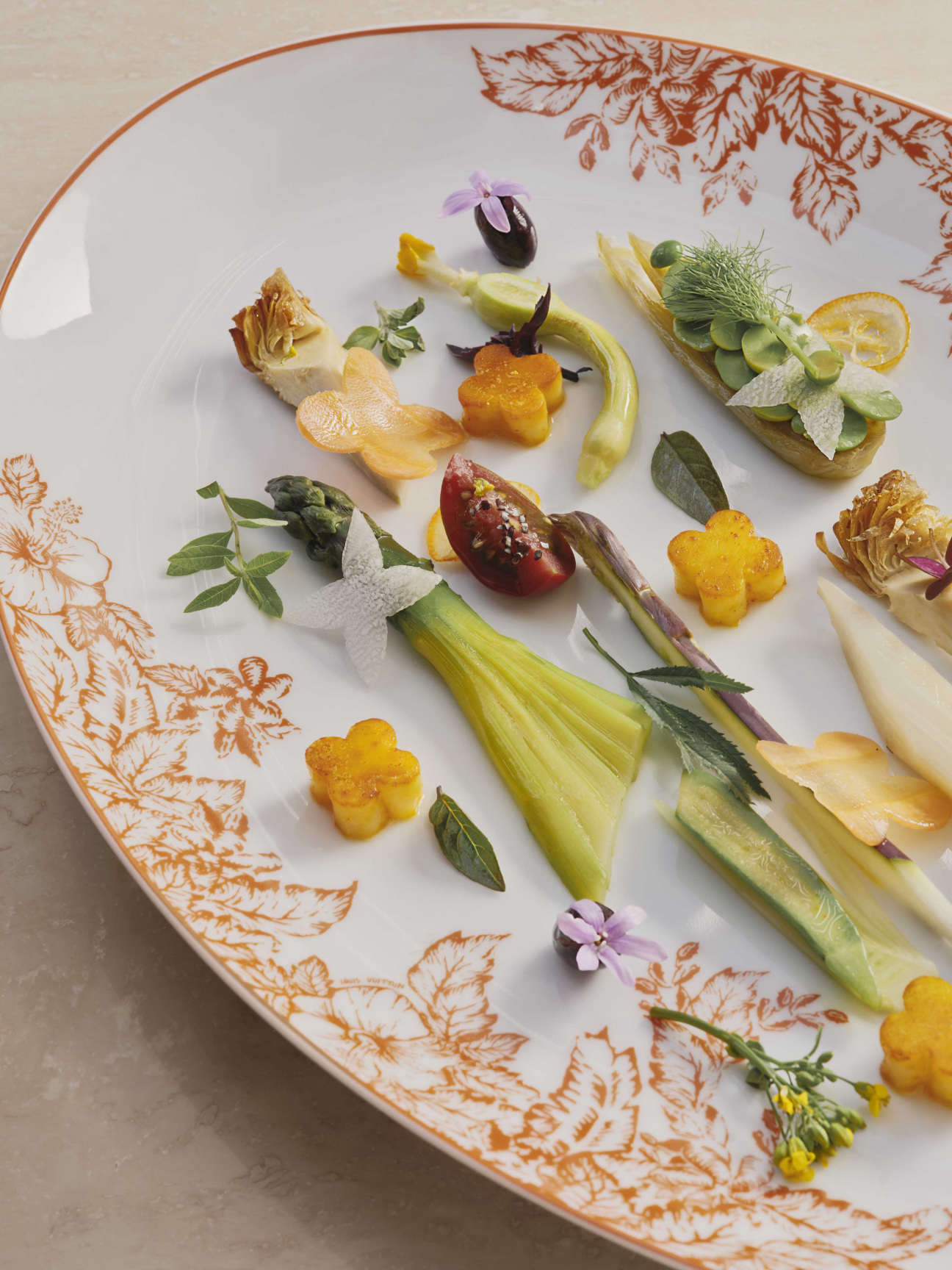
What’s the secret to a memorable dinner?
Frédéric: It’s this symbiosis that exists between all the teams. We all have completely different skill sets, but everything comes together in the end. If you have an excellent dish without an excellent wine, something might be missing.
If you have an excellent dish without excellent bread, something might be missing. It’s the entire art that is essential. It’s really all the little details that make the dinner unforgettable. My grandmother used to say, “You can’t buy a smile.” She’s right.
Which rule of kitchen etiquette do you always follow?
Frédéric: The fundamental rule in our team is to help the people around us grow. It’s the concept that drives us each day: to pass down knowledge and help people grow, regardless of whether they are apprentices, commis chefs, or interns. This rule of helping people grow also means helping the people around us.
Obviously, this includes the people on our team, but also those in the entire ecosystem around us: the farmers and all the suppliers we work with on a daily basis. We have to bring them beautiful things, too, so that they can grow at the same pace as we do.
Donckele: I’m lucky enough to work with extremely passionate people. I just tell them two things: We waste time doing things that are bad or just average, and we save time doing things right or even doing exceptional things.
What are essential things that define summer cuisine for you?
Donckele: Definitely color. The colors of the furniture—orange, yellow, or blue give a summery feel. They are bright colors that slightly counterbalance summer creativity.
Then, of course, there is the produce—courgettes, aubergines, herbs, tomatoes. And finally, summer clothing immediately makes us feel more relaxed. We tend to wear outfits that encourage us to get away from it all.
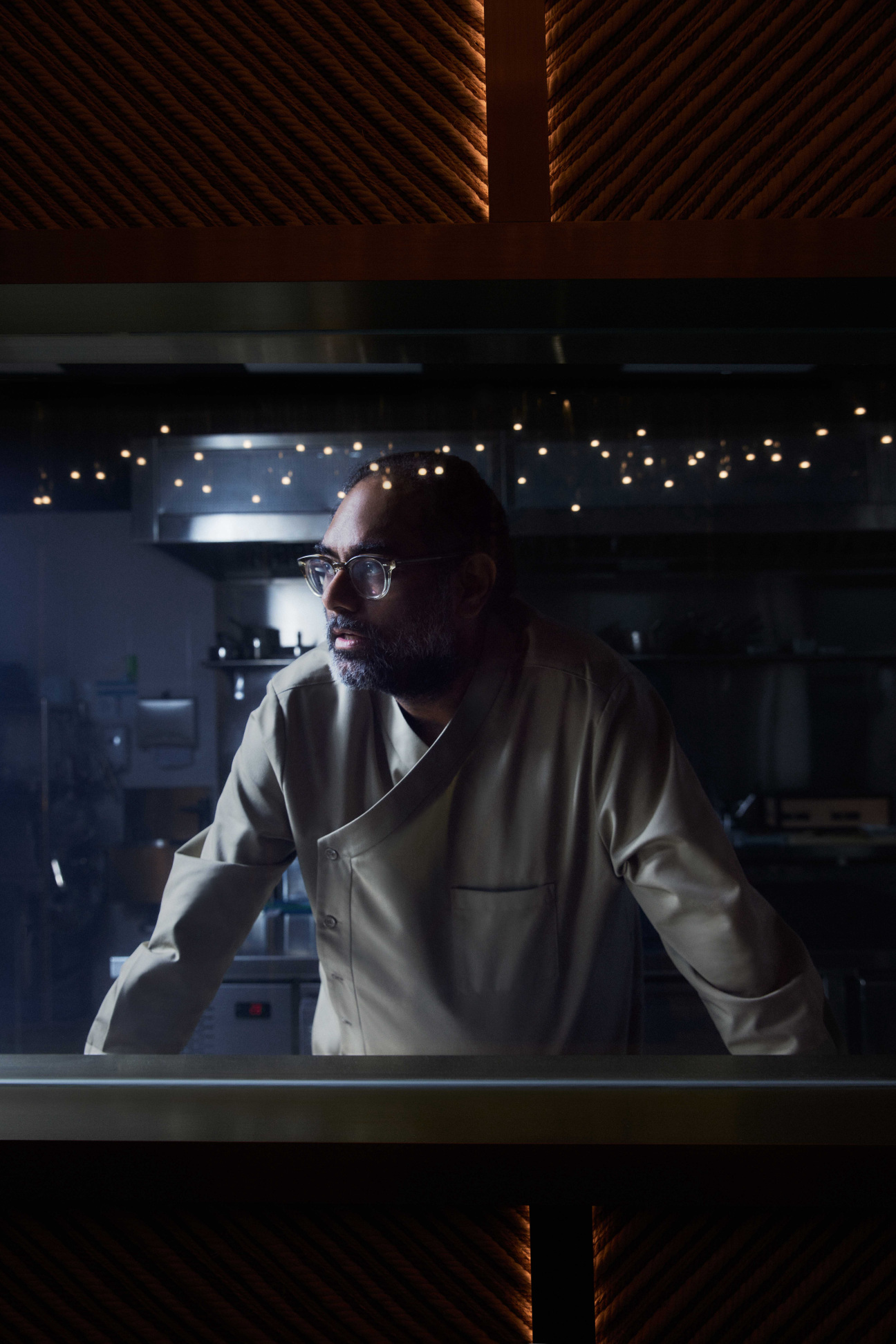
TO BANGKOK
At Louis Vuitton’s first restaurant in South Asia, Indian chef Gaggan Anand has curated a Thai menu that pulls from the vibrancy of the maison’s output. The Bangkok outpost’s menu is responsive to what Anand calls the “hot” and “hotter” seasons, placing market-fresh selections onto signature tableware and, on occasion, ice.
What quintessential flavors and ingredients define the regional cuisine for you?
Gaggan Anand: Sweet, sour, spicy, and salty in the same bite. It’s about the complexity: That’s how Thai cuisine and Indian cuisine have become so popular all over the world. It’s not just because of the curries, but because of all these tropical fruits combined with seafood and meat in every course.
What hallmarks of the city seep into your work?
Anand: It’s not the hallmark of the city, but the hallmark of the house. At your first bite, you get it. Every dish uses a monogram or symbol of Louis Vuitton that you can recognize the moment you see it. That symbol, we made it lickable. We burn it. We make it into ice creams. There are so many ways to use the same symbol and yet not lose my identity, and keep the identity of the house.
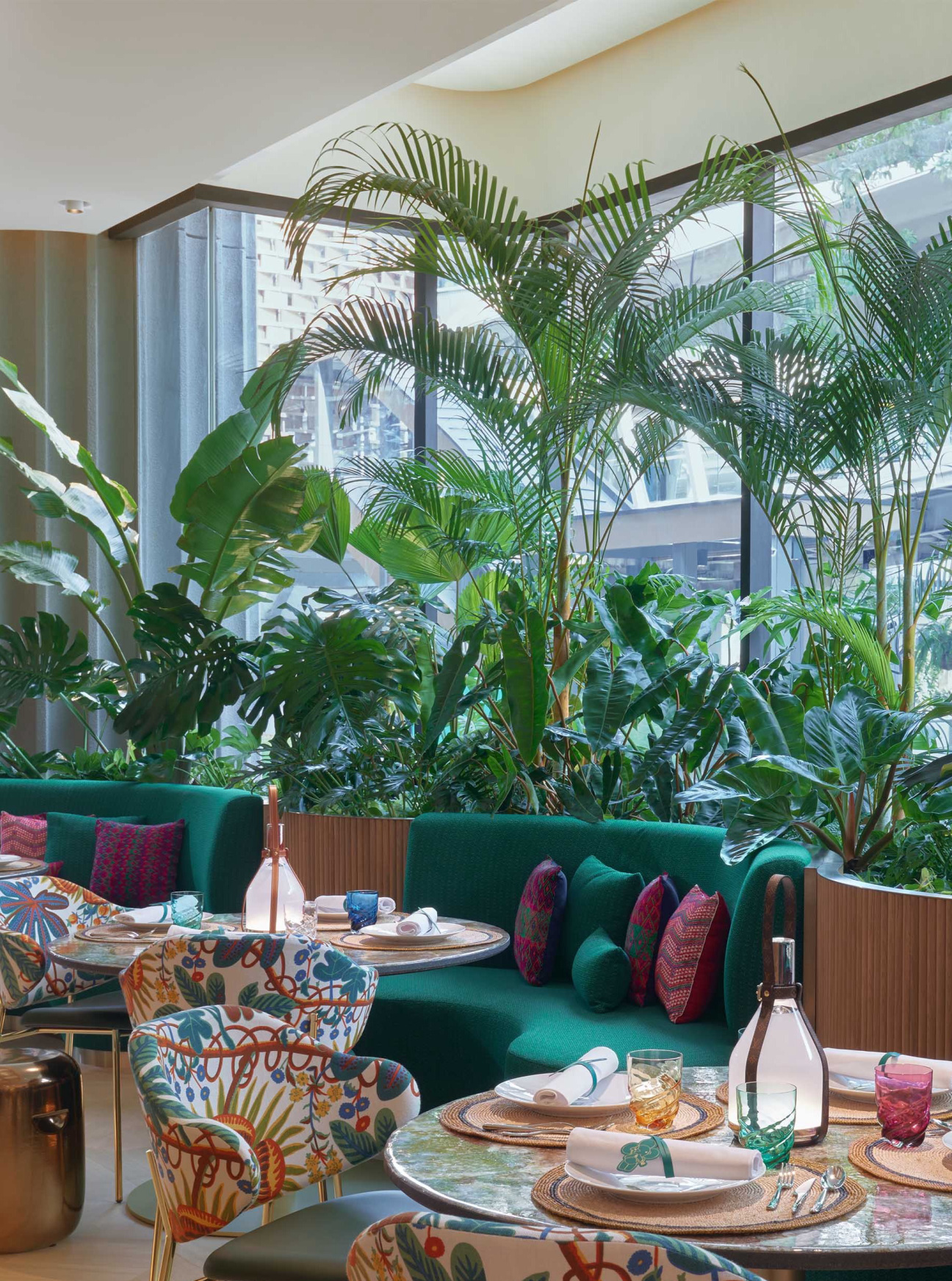
What elements define summertime cuisine?
Anand: In Thailand, it’s always summer. We have four seasons: hot, hotter, hottest, and hell. We have the same ingredients all year, apart from seasonal, tropical foods. So, we try to bring as many changes as we can in textures and temperatures. For example, we have a dish where we put the food in an ice block. I think 50 percent of the menu is completely cold.
Where in the city do you go when you need a creative reset?
Anand: For inspiration, I travel the world because I believe the world is united through food. Look at this world—you wake up and the first news you hear is hate and people working against each other over culture and over religion.
My perspective is that in this chaotic world, when people come to eat in a restaurant, they forget their worries at the gates, enter the restaurant, and unite in food. In food, there are no boundaries. You don’t know which religion, which color, and which culture is cooking in the kitchen.
What’s your secret to a memorable dinner party?
Anand: I like to throw parties. In Thailand, that’s not very common. People like to socialize in restaurants. When people come to my home, I cook them simple food. I play them good music. I like some wine, nice candlelight, good food, barbecue, fish cooked in salt. If I cook, I go to the market that morning.
I see what I have that day and make a menu. I love hosting people. It’s a part of my DNA. I even cook for my dogs. Can you imagine? You have to come and see my dog’s menu. You’ll go crazy.










 in your life?
in your life?

